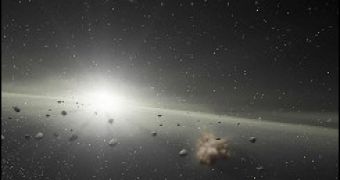Remember the asteroid that killed the dinosaurs and almost wiped all life from the face of the Earth? NASA says there is no immediate risk of that happening in the near future, although there might be a lot of such objects in the near vicinity of our planet that could intersect Earth's orbit and cause havoc, which could remain undetected. NASA is now exposing us to a possible planetary catastrophe if a big enough asteroid evades observation and slams into Earth.
Because of insufficient funding and the strategic projects that NASA is already running, the agency can't do more to detect Near Earth Objects, according to Scott Pace, head of the program analysis and evaluation at NASA. Lawmakers threatened to close the NASA operated giant radio telescope in Puerto Rico, one of the world's foremost facilities for tracking space objects.
The possible consequences of this ignorance are disastrous compared to small price the American Government would have to pay to keep the NEO program alive, after all there is nowhere to hide if such an event would take place. Also the National Science Foundation has marked the Arecibo Observatory for closure after 2011 and there is no funding found amongst the private sectors, but NASA say that they will get a new monitoring system, including a network of four telescopes being built in Hawaii by the United States Air Force.
The budget cuts on many research programs operated by NASA and are directly linked to president's ambition of putting astronauts back on Moon by the year 2020 in a program that includes a manned mission to Mars and beyond, critics say.
The biggest threat so far comes from a small asteroid named Apophis, about 250 meters in diameter, which will swing by Earth on Friday 13th of April, 2029, but NASA says the chance of Apophis passing through a "gravitational keyhole" and hitting Earth in 2036 is one in 45,000.
Currently NASA only tracks objects larger than one kilometer in diameter, which come in the near vicinity of the Earth only once every hundred thousands years and an object of that size striking Earth can trigger rapid disastrous climate change and asteroids at least ten kilometers such as the one that killed the dinosaurs would be even rarer.
The annual NEO budget of 4.1 million dollars was attacked by the Congress as a result of the lawmakers' complaint that NASA failed to expand its NEO search for objects at least 140 meters in diameter. There are at least 20,000 small objects with potential to hit the planet that could still inflict large regional damage if one were to intersect the Earth's orbit.
NEO programs are currently being developed by the European and Japanese space agencies, but the percent of work made by NASA in this domain is still more that 98 % of the total research.

 14 DAY TRIAL //
14 DAY TRIAL //